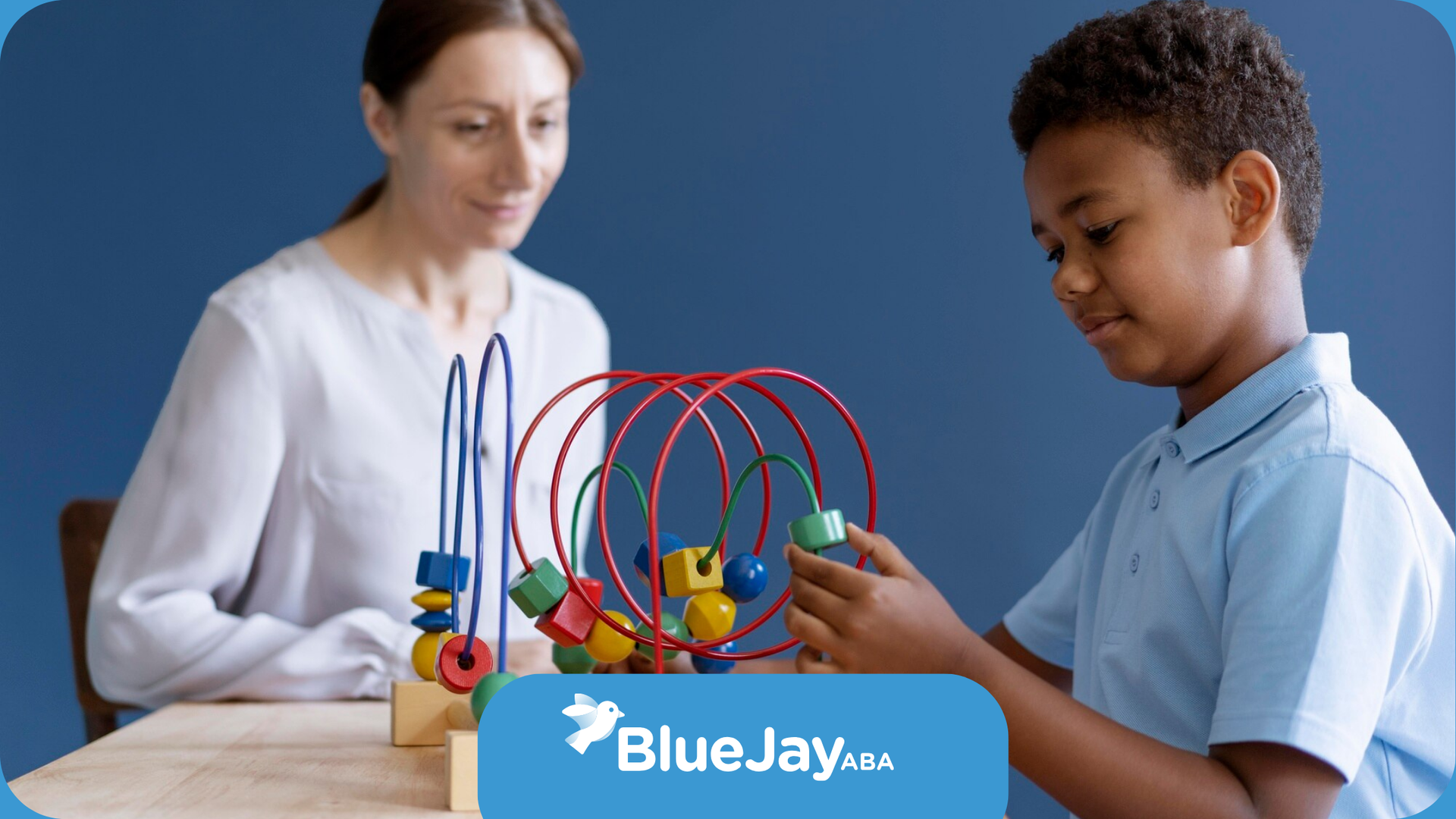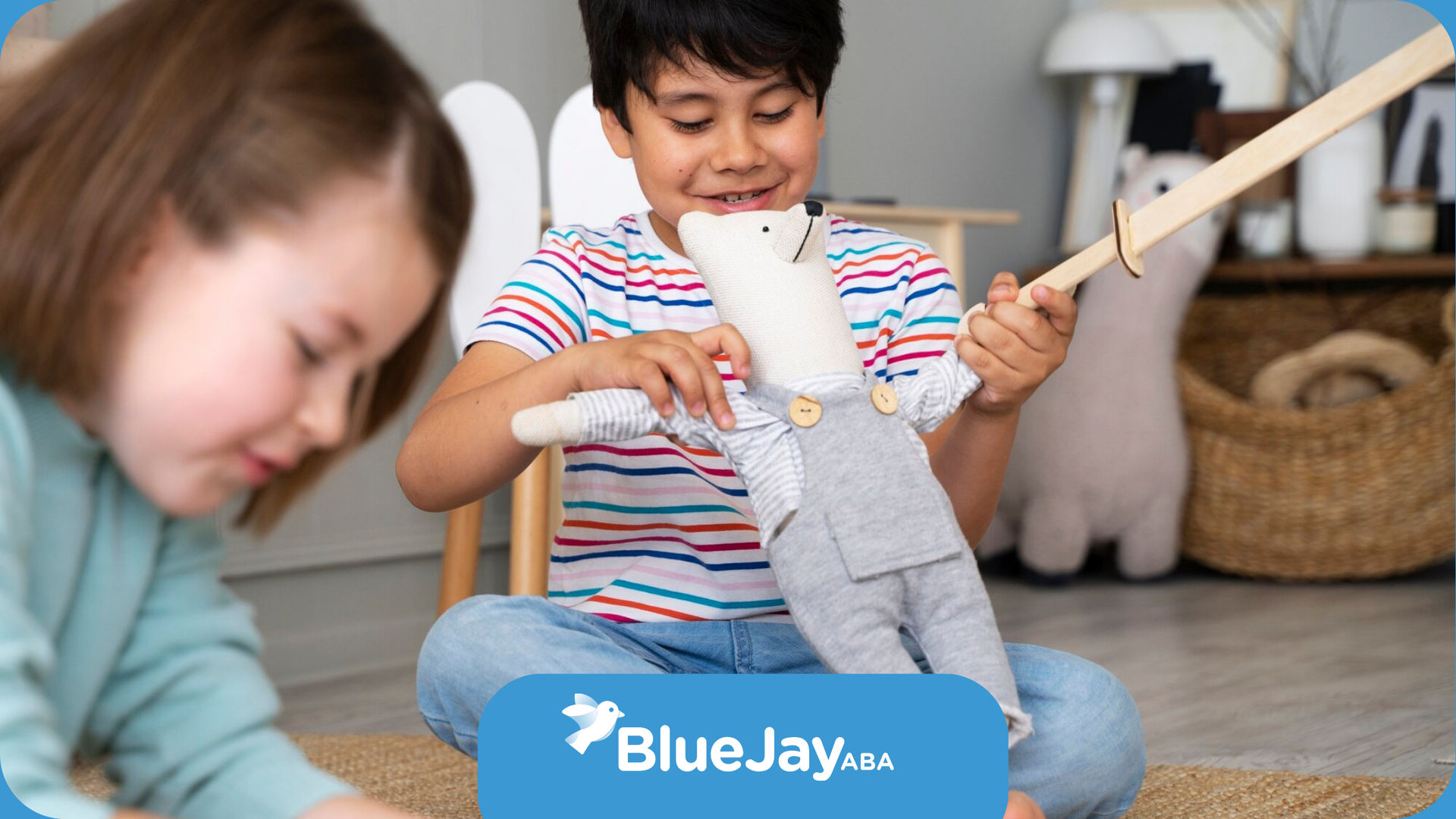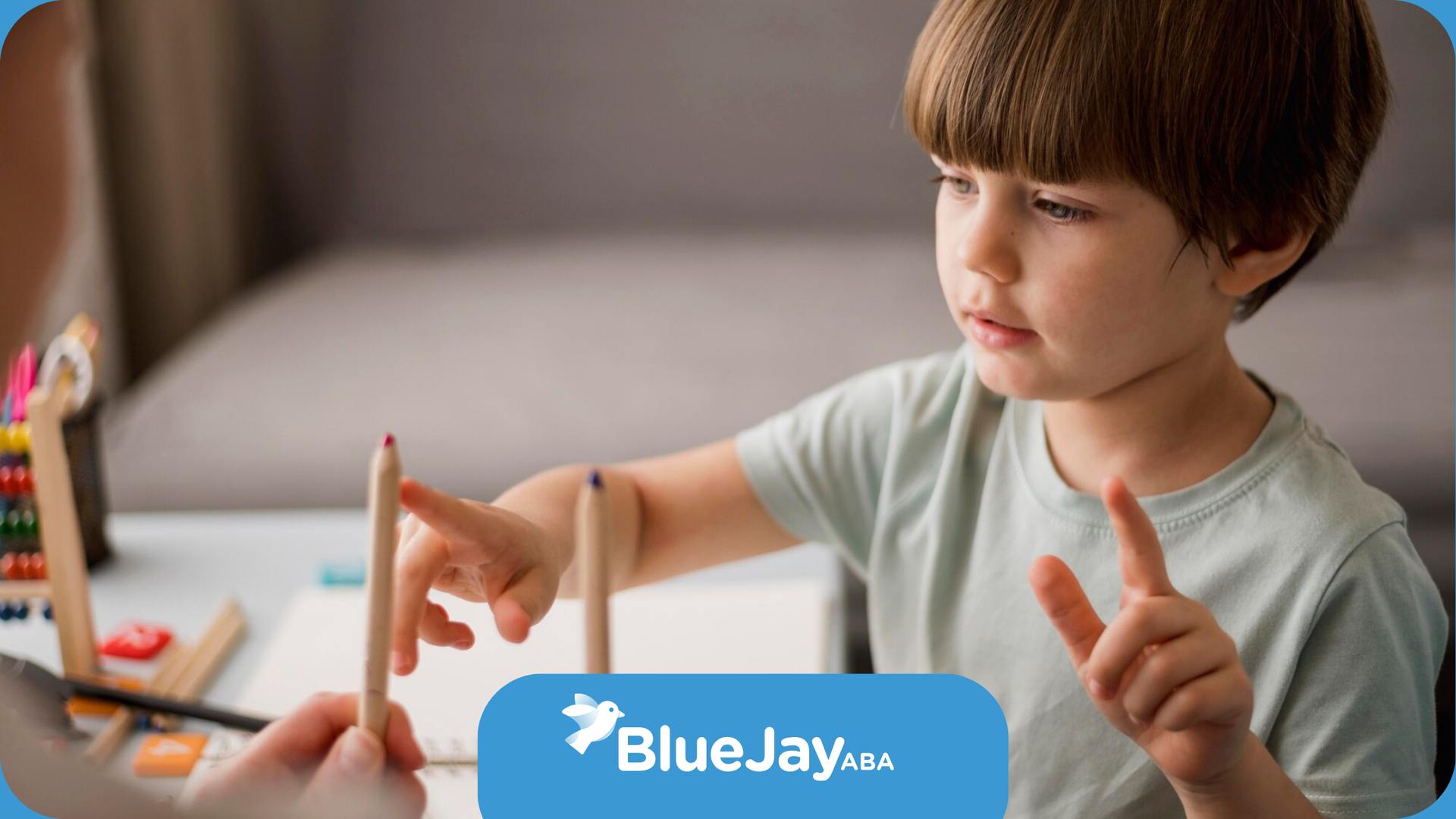Building Stronger Bonds: Practical Autism Parenting Tips for Families
Supporting Communication in Autism
Effective communication is a cornerstone of building stronger bonds within families, especially when supporting a child with autism. Understanding the unique communication challenges faced by children with autism and the importance of patience and understanding can significantly enhance the quality of interactions.
Understanding Communication Challenges
Children with autism often face difficulties in both expressive and receptive communication. These challenges can include trouble speaking, understanding spoken language, and interpreting non-verbal cues such as body language and facial expressions. Each child with autism is unique, and their communication needs can vary widely.
| Communication Challenge | Description |
|---|---|
| Expressive Communication | Difficulty in articulating thoughts and feelings verbally |
| Receptive Communication | Challenges in understanding spoken language |
| Non-verbal Cues | Trouble interpreting body language and facial expressions |
Understanding these challenges is essential before exploring specific techniques to improve communication. Speech therapy is a crucial component in supporting children with autism, and a qualified speech therapist can play a significant role in helping children with autism spectrum disorder (ASD).
Importance of Patience and Understanding
Patience and understanding are fundamental when communicating with a child with autism. Parents must recognize that their child’s communication abilities may develop at a different pace compared to neurotypical children. It is crucial to be patient and give the child time to express themselves.
Here are some key points to consider:
- Allow Extra Time: Give the child ample time to process information and respond.
- Be Clear and Concise: Use simple language and short sentences to convey messages.
- Use Visual Supports: Incorporate visual aids to help the child understand and communicate more effectively.
By fostering an environment of patience and understanding, parents can create a supportive atmosphere that encourages their child to communicate more openly. For more tips on supporting communication in autism, visit our autism support for parents page.
Understanding and addressing the communication challenges faced by children with autism is a critical step in building stronger family bonds. By being patient and understanding, parents can help their children develop effective communication skills and build meaningful relationships. For additional resources, check out our autism resources for families and autism family therapy pages.
Effective Communication Strategies
Effective communication is essential for building stronger bonds with children with autism. Here are some practical strategies that can help families enhance communication with their children.
Utilizing Visual Supports
Visual supports are potent tools for enhancing communication with children with autism. These can include visual schedules, PECS (Picture Exchange Communication System), and social stories. Many children with autism respond better to visual information than verbal communication. Visual supports can help children understand expectations, reduce anxiety, and improve their ability to express needs and desires.
| Type of Visual Support | Description |
|---|---|
| Visual Schedules | Charts or boards that outline daily routines and activities |
| PECS | A system where children use pictures to communicate |
| Social Stories | Short stories that describe social situations and appropriate responses |
Practicing Active Listening
Active listening is crucial in effective communication with children with autism. It involves giving full attention, validating feelings, and reflecting on what the child is trying to communicate. Active listening shows the child that their efforts to communicate are valued and respected.
Steps for Active Listening:
- Make eye contact and face the child.
- Nod or use verbal acknowledgments like "I see" or "I understand."
- Repeat or paraphrase what the child has said to confirm understanding.
- Avoid interrupting or finishing the child's sentences.
Practicing active listening can significantly improve the child's confidence in their communication abilities.
Implementing Positive Reinforcement
Positive reinforcement can encourage effective communication with children with autism. When a child makes an effort to communicate, parents should provide verbal praise or rewards to motivate them to continue improving their communication skills.
Examples of Positive Reinforcement:
- Verbal Praise: "Great job telling me what you need!"
- Tangible Rewards: Stickers, small toys, or extra playtime.
- Social Rewards: High-fives, hugs, or special outings.
| Type of Reinforcement | Example |
|---|---|
| Verbal Praise | "Well done!" |
| Tangible Rewards | Stickers, toys |
| Social Rewards | High-fives, hugs |
Positive reinforcement helps to create a supportive environment where the child feels encouraged to communicate.
By utilizing these effective communication strategies, families can foster better understanding and stronger connections with their children with autism.
Creating an Autism-Friendly Environment
Creating an autism-friendly environment is essential for supporting children with autism. This involves establishing routines and consistency, as well as introducing augmentative communication systems to enhance communication and reduce anxiety.
Establishing Routines and Consistency
Children with autism often benefit from predictable routines. Establishing clear and consistent daily routines can provide a sense of stability and help children anticipate what will happen next. Visual schedules or calendars can be valuable tools to visually represent daily routines, activities, and transitions.
| Tool | Description |
|---|---|
| Visual Schedules | Charts or boards displaying daily activities and routines with pictures or symbols. |
| Picture Cards | Individual cards with images representing specific tasks or activities. |
| Timers | Devices to indicate the duration of activities or transitions. |
Visual supports such as schedules, picture cards, and timers are invaluable tools for children with autism, aiding in comprehension, communication, and organization. They provide structure, predictability, and help reduce anxiety, promoting independence.
Introducing Augmentative Communication Systems
Effective communication is crucial for children with autism. Introducing augmentative and alternative communication (AAC) systems like sign language or communication apps can supplement verbal communication. Individualized communication plans based on their strengths and challenges can be beneficial.
| AAC System | Description |
|---|---|
| PECS (Picture Exchange Communication System) | A system where children use picture cards to communicate needs and desires. |
| Communication Apps | Digital tools that provide visual and auditory support for communication. |
| Sign Language | A manual form of communication using hand gestures and movements. |
Visual supports are potent tools for enhancing communication with children with autism. These can include visual schedules, PECS, and social stories, catering to the strengths of many children with autism who often respond better to visual information than verbal communication.
For more information on supporting communication in autism, visit our section on autism support for parents. Additionally, explore resources on autism family therapy and autism sibling support to further enhance your understanding and support for your child.
Promoting Independence and Social Skills
Fostering independence and social skills in children with autism is essential for their overall development and well-being. By encouraging self-regulation and positive peer interactions, families can help their children build confidence and meaningful connections.
Encouraging Independence and Self-Regulation
Promoting independence in children with autism involves breaking tasks into smaller, manageable steps and providing clear instructions. This approach helps children understand and complete tasks more effectively. Teaching self-regulation techniques, such as deep breathing or mindfulness, can also help children manage their emotions and behavior.
| Strategy | Description |
|---|---|
| Breaking Tasks into Steps | Divide tasks into smaller, manageable steps to make them easier to understand and complete. |
| Clear Instructions | Provide concise and clear instructions to help children follow through with tasks. |
| Self-Regulation Techniques | Teach techniques like deep breathing or mindfulness to help children manage emotions and behavior. |
Establishing predictable routines is another effective way to promote independence. Clear and consistent daily routines provide a sense of stability and help children anticipate what will happen next. Visual schedules or calendars can be valuable tools to visually represent daily routines, activities, and transitions.
Fostering Positive Peer Interactions
Positive peer interactions are crucial for social development. Establishing peer buddy programs, providing social skills training, and organizing inclusive activities that promote collaboration can help children with autism build meaningful connections with their peers.
| Strategy | Description |
|---|---|
| Peer Buddy Programs | Pair children with autism with peers who can provide support and friendship. |
| Social Skills Training | Offer training sessions to teach children essential social skills. |
| Inclusive Activities | Organize activities that encourage collaboration and interaction among all children. |
Visual supports are powerful tools for children with autism, as they rely heavily on visual cues to understand and navigate their surroundings. Visual supports can include visual schedules, labeled storage bins, visual reminders for daily tasks, and visual cues for behavior expectations.
Creating opportunities for children with autism to engage in community activities and social stories can further enhance their social skills. Social stories are short, descriptive stories that provide information about social situations and appropriate responses. These stories can help children understand and navigate various social scenarios.
By implementing these strategies, families can support their children with autism in developing independence and social skills, ultimately helping them lead more fulfilling lives.
Tools and Resources for Autism Support
Early Intervention Benefits
Early intervention significantly improves outcomes for children with autism by targeting critical areas of development such as communication, social skills, and behavior management. Early intervention programs are designed to provide support at a young age, which can lead to better long-term outcomes.
| Area of Development | Early Intervention Benefits |
|---|---|
| Communication | Enhances language skills and reduces frustration |
| Social Skills | Improves interaction with peers and adults |
| Behavior Management | Reduces challenging behaviors and promotes positive actions |
Early intervention services may include speech therapy, occupational therapy, and specialized educational programs. These services are often tailored to meet the individual needs of each child, ensuring that they receive the most effective support possible.
Behavioral Therapy and Educational Resources
Behavioral therapy is a cornerstone of autism support, with Applied Behavior Analysis (ABA) being one of the most widely used approaches. ABA therapy focuses on improving specific behaviors, such as social skills, communication, and academics, through positive reinforcement techniques.
| Therapy Type | Description | Benefits |
|---|---|---|
| ABA Therapy | Uses positive reinforcement to improve behavior | Enhances social skills, communication, and academics |
| Behavior Charts | Visual tools to track and reward positive behavior | Encourages desired behaviors and provides clear expectations |
| Token Economies | System of earning tokens for positive behavior, which can be exchanged for rewards | Motivates children to engage in positive actions |
Educational resources are also crucial for supporting children with autism. Individualized Education Programs (IEPs) are tailored plans that outline specific educational goals and the services needed to achieve them. Specialized curriculum materials and assistive technology tools can further support academic progress and skill development.
| Educational Resource | Description | Benefits |
|---|---|---|
| IEPs | Customized educational plans for each student | Provides personalized support and goals |
| Specialized Curriculum | Materials designed for children with autism | Enhances learning and engagement |
| Assistive Technology | Tools such as AAC devices and software | Supports communication and learning |
In addition to these resources, tools such as Augmentative and Alternative Communication (AAC) devices, social skills training programs, and social stories are effective in teaching social cues and appropriate behavior for children with autism. The PEERS program at UCLA, a 16-week-long program, teaches social skills, including tips on dating, for individuals with autism. This program focuses on enhancing relational skills through structured sessions.
Families can also benefit from exploring autism family therapy and autism sibling support to ensure that all members of the family receive the support they need.
Enhancing Social Skills in Autism
Social Skills Development
Social skills development is crucial for individuals with autism, as it helps them navigate social interactions and build meaningful relationships. Learning social skills often involves guidance from various professionals, including special education teachers, speech pathologists, and clinicians. These experts may lead social skills groups that provide direct instruction and opportunities for real-life practice with peers.
One effective program for social skills development is the PEERS program at UCLA. This 16-week-long program teaches social skills, including tips on dating, through structured sessions. The program focuses on enhancing relational skills and provides a supportive environment for individuals with autism to practice and improve their social interactions.
Children with autism also benefit from observing and interacting with their peers. Providing ample exposure to social interactions is essential for practicing and using social skills effectively. This can be achieved by taking the child to public locations with other kids, ensuring inclusion in mainstream activities at school, or organizing playdates.
Community Participation and Social Stories
Community participation is an important aspect of enhancing social skills in individuals with autism. Building social skills through practice can lead to increased participation in the community, happiness, and the development of friendships. Encouraging community involvement can be achieved through various activities, such as joining clubs, participating in sports, or attending community events.
Social stories are another valuable tool for improving social skills in individuals with autism. These personalized teaching stories are presented visually, such as through charts, booklets, or electronic devices. Social stories help individuals with autism understand what to expect in different situations and how to navigate them effectively, making social situations more predictable.
| Social Skills Development | Community Participation | Social Stories |
|---|---|---|
| Involves guidance from professionals | Encourages joining clubs, sports, events | Presented visually through charts, booklets, devices |
| Includes programs like PEERS at UCLA | Leads to increased happiness and friendships | Helps understand and navigate social situations |
| Provides real-life practice with peers | Enhances community involvement | Makes social situations more predictable |
Final Thoughts
Supporting a child with autism in their communication journey requires patience, understanding, and the right strategies. By incorporating visual supports, active listening, and positive reinforcement, families can help their child build confidence in expressing themselves. Creating an autism-friendly environment and fostering social skills further enhances communication growth.
If you're looking for personalized support in developing your child's communication skills, Blue Jay ABA is here to help. Contact us today to learn more about our ABA therapy services and how we can support your family's journey!
Sources:
- https://nationalautismresources.com/the-picture-exchange-communication-system-pecs/
- https://www.steadystridesaba.com/
- https://www.assistiveware.com/learn-aac/what-is-aac
- https://www.autism.org.uk/advice-and-guidance/topics/communication/communication-tools/visual-supports
- https://www.nichd.nih.gov/health/topics/autism/conditioninfo/treatments/early-intervention
- https://www.nichd.nih.gov/health/topics/autism/conditioninfo/treatments/behavioral-management
- https://www.autismspeaks.org/social-skills-and-autism
Need Assistance?
We’re Here to Help
Our expert team is ready to support your child’s development and well-being.
We are committed to offering tailored ABA therapy solutions that promote growth.
Contact us today for Professional ABA Therapy.
Related Posts
MENU
GET IN TOUCH
STAY CONNECTED
Join our newsletter and find out more
NewsletterFooter
We will get back to you as soon as possible
Please try again later








